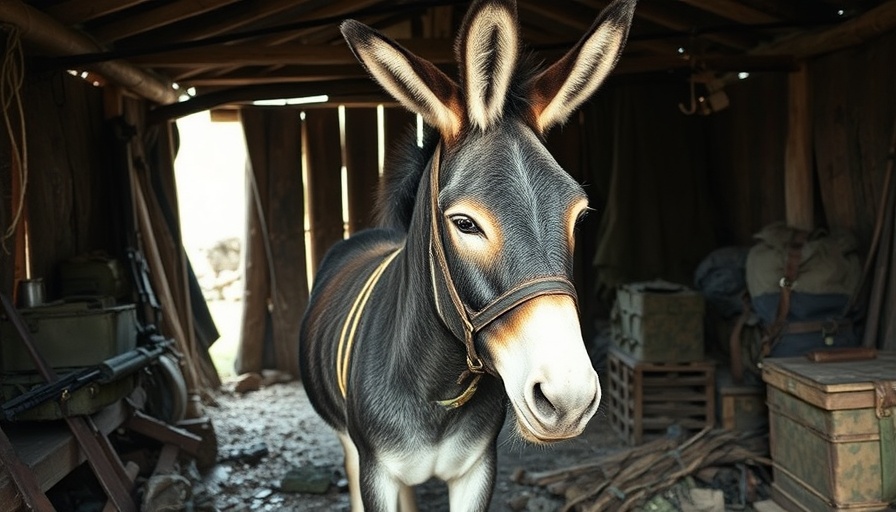
Russia's Diminishing Military Resources
In recent months, the world has witnessed an unprecedented pivot in military logistics, particularly within Russia's armed forces. With heavy equipment losses in Ukraine soaring to nearly 15,500 units, the Kremlin has increasingly turned to alternative and unexpected means of transportation: pack animals, mainly donkeys.
The Rise of Donkeys in Modern Warfare
Social media buzzed recently with reports of Russian troops using donkeys to transport ammunition and supplies to the front lines. As footage circulated, military bloggers noted that these animals were not a mere novelty but rather a pragmatic solution to significant logistical challenges faced by the Russian military. Viktor Sobolev, a member of the State Duma's defense committee, expressed support for this method, stating, "It’s better for a donkey to be killed than to lose valuable troops or transportation vehicles." This sentiment underscores the critical state of Russia's supply chains as conventional vehicles dwindle.
Historical Context: Pack Animals in Warfare
Historically, pack animals have played a crucial role in military logistics. During World War II, horses and even dogs were integral to transporting supplies, suggesting a cyclical trend in military resource utilization. The current reliance on donkeys may evoke a sense of déjà vu, reminiscent of older military strategies where infantry operations adapted to the realities of the battlefield. Russian officials have echoed similar sentiments, reminding skeptics of horses' role in logistics during the Great Patriotic War.
Contemporary Reactions and Implications
The strategic decision to deploy donkeys has prompted reactions ranging from humor to serious concerns about military effectiveness. Many military observers have criticized the Russian army's lack of modern armored vehicles, using the donkey situation as a lens to critique the broader military strategy. Widespread memes and satirical comments have emerged, questioning the operational readiness of troops heading into battle with such unconventional support.
Future Implications for Russian Warfare
As the conflict in Ukraine approaches its fourth year, the implications of this logistical evolution cannot be understated. The dependency on pack animals signifies an ongoing trend of demilitarization and logistical constriction within the Russian forces. This shift may indicate a bleak future for Russia’s military capabilities unless significant advancements are made in logistical technologies and strategies. If current trends persist, the Russian military may be forced to continue facing logistical challenges that hamper its operational effectiveness on the ground.
Conclusion: The Changing Face of Military Logistics
While the image of soldiers riding into battle on hoverboards might be humorous and exaggerated, the reality is that these resources reveal a pivotal shift in military logistics today. As these adaptations unfold, military analysts and futurists alike will be watching closely to assess the effectiveness of such unconventional strategies in the ongoing conflict.
 Add Row
Add Row  Add
Add 




Write A Comment